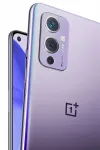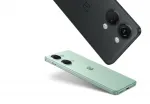Nokia 5140i is a discontinued cell phone model that belongs to the renowned mobile manufacturer “Nokia”. It is also known as “Nokia 5140”, but it is widely referred to as “Nokia 5140i”. This device was introduced into the market in the year 2005, during the second quarter of the year. The phone was identified as the Nokia 5140i in the cell phone industry with its unique model number 5901. This device is known to have several essential features that have been considered benchmarks in cell phone technology, especially at that time.
Let's start with the physical aspects. The Nokia 5140i has compact dimensions, measuring 106.5 x 46.8 x 23.8 mm, with a weight of 100.8 grams. This makes it a handy device that can easily fit into the palm of your hand, without being bulky or heavy. The device comes with a Mini-SIM slot, which was the standard size for SIM cards at that time. The phone is also equipped with a robust and durable body, with an area of 86 cubic centimeters. This device was built to last, as it could withstand everyday wear and tear, making it a reliable and sturdy device for daily use.
Moving on to the display, the Nokia 5140i comes with a 1.5 inch CSTN (color super-twisted nematic) display. This type of display was the most advanced display technology at that time, providing a vibrant and colorful display. The screen was also adjustable in terms of brightness, allowing users to customize it according to their preferences. The display has a resolution of 128 x 128 pixels, which is equivalent to 121 pixels per inch density. This display was considered high resolution for that period, providing clear and crisp visuals.
The device is equipped with a VGA camera, located at the back of the phone. This camera has a single lens and can capture videos. The video quality may not be as good as modern-day smartphones, but it was still a significant advancement in cell phone technology at that time. Unfortunately, the Nokia 5140i does not have a front-facing camera. This feature has become a standard in recent years, but it wasn’t a common feature in mobile phones back then.
When it comes to connectivity, the Nokia 5140i did not support any form of internet connectivity, such as WLAN (wireless local area network) or cellular data. However, it did come with a stereo FM radio, allowing users to listen to their favorite radio stations. Additionally, it also has an infrared port, which was used for wireless data transfer with other devices. The phone also has a Pop-Port, which is a proprietary port for transferring data to a computer or charging the phone.
The Nokia 5140i was not a multimedia-centric device, but it did cater to basic entertainment needs. It had a loudspeaker and downloadable polyphonic and MP3 ringtones. Users could also access and download Java-based games like bowling, adventure race, and more. It also had predictive text input, which predicted and suggested words while typing. These features may seem basic now, but they were impressive at that time and added to the overall user experience.
Under the hood, the Nokia 5140i is powered by a removable Li-Ion 760 mAh battery (BL-5B). This battery could provide a stand-by time of up to 300 hours and up to 5 hours of talk time. These battery specifications were considered above average, as most cell phones at that time had a shorter battery life. The phone also comes with an internal memory of 3.5 MB, which may seem insufficient nowadays, but it was considerable back then. It also had support for external memory cards, but unfortunately, it did not have a card slot.
The Nokia 5140i is a 2G compatible device, operating using GSM (Global System for Mobile Communications) technology. It supports GSM 900, 1800, and 1900 bands, making it a tri-band device. This level of network compatibility made it a versatile device that could be used in multiple countries with different carriers. It also had support for GPRS (General Packet Radio Service) and EDGE (Enhanced Data Rates for GSM Evolution) technology, providing faster data transfer rates compared to traditional GSM technology.
There are a few other miscellaneous features worth mentioning. The phone comes in three color options - black, orange, and dark green transceiver. It also has a built-in phone book with a capacity to store multiple contacts, as well as call records for up to 20 dialed, 10 received, and 10 missed calls. It also has support for Java MIDP 2.0, which allows users to run certain applications on the device.
When it comes to SAR (Specific Absorption Rate), which is a measure of the rate at which energy is absorbed by the human body when exposed to a radio frequency electromagnetic field, the Nokia 5140i has a SAR value of 0.25 W/kg (head) and 0.55 W/kg (body). In the EU, it has a SAR value of 0.77 W/kg (head). These values are well within the permitted limit by regulatory bodies, making it a safe device to use.
In conclusion, the Nokia 5140i was an innovative and advanced device for its time. It offered essential features that have now become standard in modern-day smartphones, making it a noteworthy device in the evolution of cell phone technology. Despite being discontinued, the Nokia 5140i is still remembered by many as a reliable and durable device, setting the benchmark for future cell phone models.









